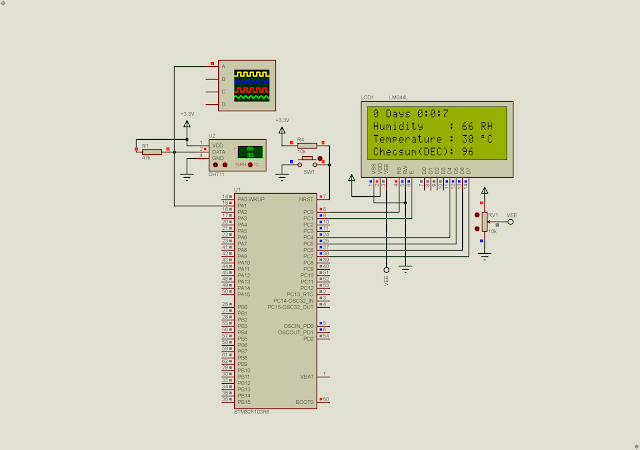In this example, I create a counter using a push button and a two-digit multiplexing display. The display is common cathode type. I use STM32 SysTick to drive either display and push button. The program is written using STM32CubeIDE. I use Proteus 8 to simulate this example program.
 |
| Simulating Program In Proteus |
The display is a two-digit common cathode type. I use two 74HC04 Hex inverter to drive the commons. However we can use two switching NPN transistors to drive the commons.
Only one single Port B is required. Between PB0 and PB9 are digital output pins. While PB15 is an digital input pin.
 |
| Code Configuration Wizard |
Code Configuration Tool allow us to select any peripheral before the source code is generated. Each digits are activated around 5 Milli-seconds. SW2 switch is active low. It's activated by pressing event without depending on SysTick.
Click here to download its source file.
For other similar posts please check,
- Getting Started With STM32F103C8T6 Module with STM32CubeIDE
- STM32F103C8T6 Blue Pill SysTick and Multiplexing Display Example
- STM32F103C8T6 Blue Pill Switch And Multiplexing Display Interface Using SysTick
- STM32F103C8T6 Blue Pill SysTick LED Blinking
- STM32F103R6 Common Anode Seven Segments Display Example
- STM32F103R6 Common Anode Seven Segments Display And Switch Interfacing
- STM32F103R6 Simple 2-Digit Multiplexing Display And Switch Example
- STM32F103R6 SysTick And Digital Clock Example
- STM32F103R6 SysTick Two-Digit Multiplexing Display and Push Button
- LED Blinking With STM32F103R6 Using SysTick




No comments:
Post a Comment